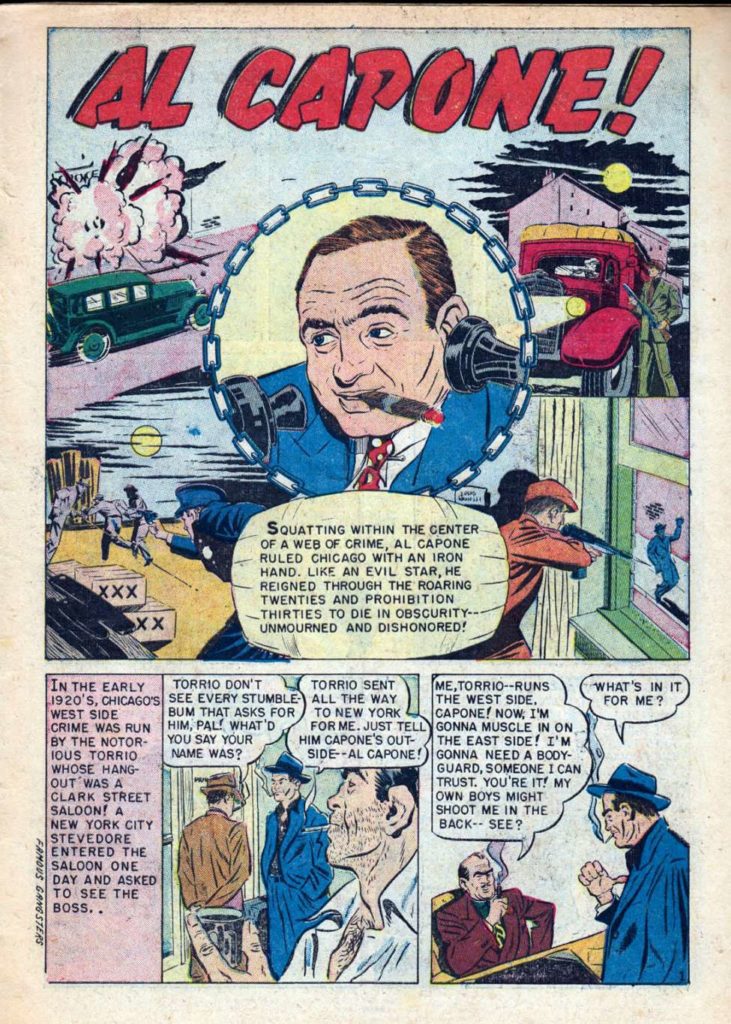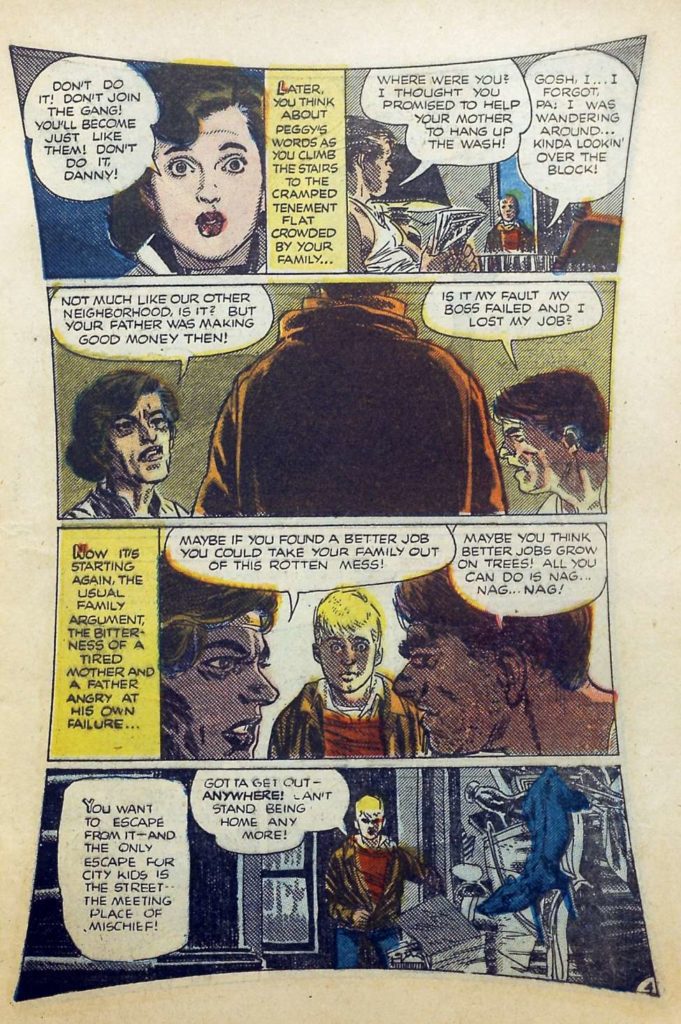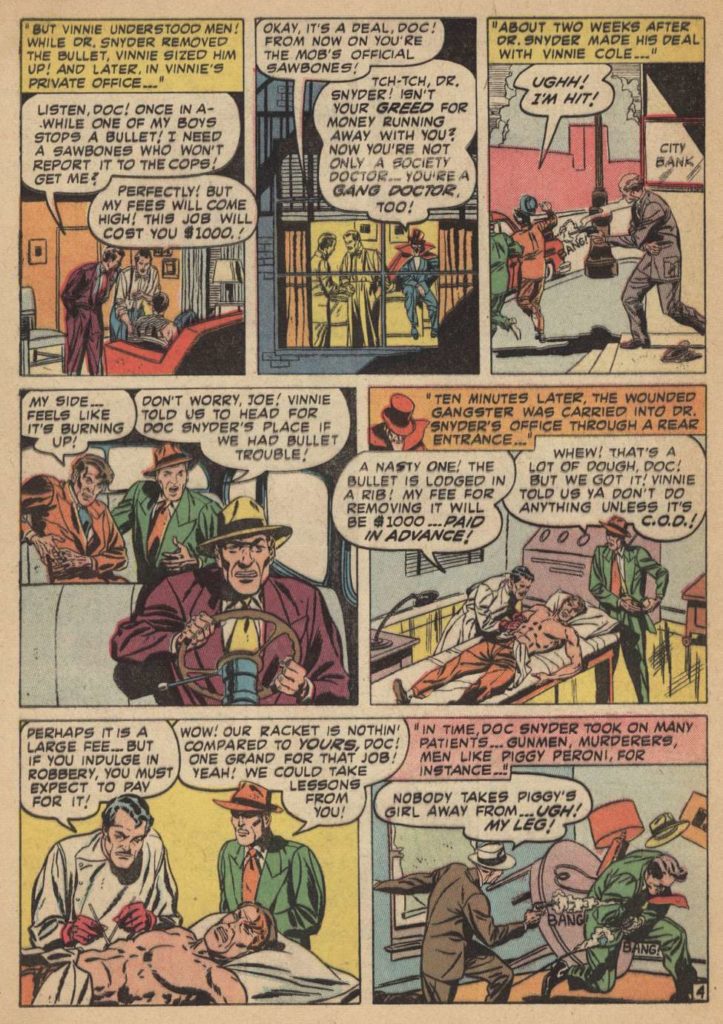Yoe Books, IDW Publishing, and Steven Brower have brought together a collection of crime comics that, unless you are already a dedicated fan of the genre, you probably won’t have seen before. Focusing on the 1950’s, but avoiding the obvious choices from EC Comics, Crime Comics Confidential touches on a period of comics history that was as volatile as the lives the comics depicted. Dr. Fredric Wertham was stirring the pot, encouraging a number of parent organizations, churches, and community groups to stand up against the evil of comics and the Senate Subcommittee on Juvenile Delinquency was held in the center of the decade that this book covers.
Featuring a number of recognizable names within the narratives as well as in the bylines, Crime Comics Confidential is a window into a different time, mixing history and creativity like an episode of a science fiction time travelling show.

Opening the Case
Crime Comics Confidential opens with a detailed essay written by editor Steven Brower. This is one of the highlights of the book and provides a mix of historical background and intriguing critique. Obvious elements of this introduction are followed up in the strips selected for the collection, in particular the biographies of such famous mobsters as Al Capone, Lucky Luciano, and John Dillinger. In an age where the lives of these criminals have been regurgitated several times on television and in the movies, mixing fact with cinematic license, it’s surprising that these strips still have anything to offer. And yet they do. The art direction and comic design is reflective of the period and the stories take a backseat to the more interesting study of the comic format itself.
The comics have been grouped in the book in such a way that as a reader you can compare and contrast specific narrative types, flicking back only a few pages to see how different writers and artists have dealt with a specific trope of the genre. The string of biographies that open the book are particularly interesting as they highlight the approaches that the creators took to representing fact as entertainment. Several of the narratives are a touch dry and heavy on text that could be read as preaching to the young audience the comics were aimed at, while others have the elements of danger and glorification that formed the heart of the moral crusade against comics at the time.
Re-reading these comics today, they seem tame in comparison to the current offerings from independent publishers and even the larger companies. But with the context given from Brower’s introduction it is possible to see how they could have been interpreted in a different manner. At the annual meeting of the Association for Education in Journalism and Mass Culture in Washington DC in 1995, Linda Adler-Kassner presented a paper highlighting the differences in attitudes towards comic consumption between adults and children, both in the 1950s and the present day.
The stories that were told in genre comics, such as crime and horror, were seen by those in authority as damaging to the youth, and glorifying the criminal aspects of society. However, one thing that is clear from each of the comics selected for this book is that crime never pays. There is a price for the lives the criminals lead and they always get their comeuppance before the final panel. There is very little shocking material from a visual point of view in these comics and, as Brower points out, the hero worship of the underdog villain is nothing new, even in the 1950s. Instead of a series of grotesque or violent tales, what this book contains is a selection of intriguing, well constructed short stories told by some of the biggest names in the industry at the time.

Artist recognition
Bernie Krigstein, Dick Briefer, Alex Toth, and John Buscema all have stories featured in this book. One of the most outstanding, visually as well as narratively, is Alex Toth’s War on the Streets. A story that deals with juvenile delinquency head on with no metaphors or cloaked superhero analogies, War on the Streets is a magnificent tale of a boy becoming embroiled in a gang. Toth highlights not only the dangers of being in a gang but also demonstrates the social mechanisms behind the decisions that the boy makes: bullying, coercion, and family neglect are all to blame for the path the boy follows. It is possible to see why such a story would be deemed unsuitable by parents or community organizations in 1950, because this is placing a lot of the blame at their doorsteps.
Crime Comics Confidential‘s strength is that it presents the collection as something of historical interest, rather than pure entertainment. It would be easy to select the most famous crime comics and reprint them in a new collection, but there is a more curated feel to this book. Contained within is an evolving thematic thread running through the comic strips as if they themselves have a deeper narrative beyond the surface readings. Brower places the comics in an order that makes you question aspects of the stories, such as the authenticity of the biographies, the moral aspect of the narrative, and even the culture in which these comics were born.

Conclusion
These crime comics are from the end of the Golden Age of comics which saw the horror genre explode across America and beyond. Crime was central to that explosion and the two genres are often featured together in anthology comics. It is not surprising that communities were easily turned against these forms of youthful entertainment, especially when you look at some of the stories portrayed in this book. Reprints for comics such as Crime and Punishment, Famous Gangsters, and Wanted Comics, may seem tame by today’s standards, but 70 years ago, these stories would have been shocking and exactly what the young audience was looking for.
This book offers a glimpse into what was available to readers in tumultuous times of mass distribution, newspaper racks, senate hearings, and witch hunts against the peddlers of filth. Crime Comics Confidential is a perfect book for the shelf of anyone interested in this period of comic history and a great collection of stories that deserve a new audience.

